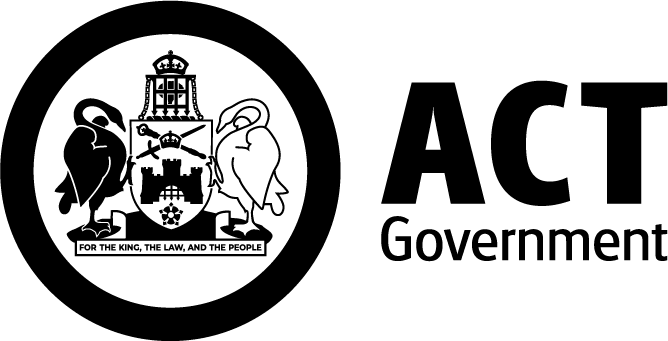Belconnen
Dunlop: Laneways on Fleay Place, Gasking Close, Hugh Mckay Crescent / Finey Close, Kerrigan Street and Morrow Street
Evatt: Badenoch Crescent / Owen Dixon Drive
Florey: Caddy Place, Clavert Place, Hamlet Place, Sticht Place, Summerville Crescent (Next to 117)
Flynn: Joyner Crescent / Tillyard Drive
Giralang: Laneway on Lenehan Street
Higgins: Laneways on Fullagar Crescent and Starke Street
Kaleen: Laneway on Shannon Circuit
Macgregor: Laneways on Boelke Place and Macfarlane Burnet Avenue
Melba: Verbrugghen Street / Bowden Place
Central Canberra
Ainslie: Bonney Street/Cowper Street and laneway on Salomons Place
Beard: Laneways on Copper Crescent and Spongolite Street
Braddon: Laneways on Coolac Place, Elimatta Street and Girrahween Street
Campbell: Laneways on Blamey Crescent, Chauvel Street, Chowne Street, Cobby Street, Edmondson Street, Gellibrand Street, Getting Crescent, Glossop Crescent, Jacka Place, Patey Street, Rankin Street, Savige Place, Vasey Crescent and Waller Crescent
Dickson: Laneways on Archer Street, Dooring Street, Lowrie Street, Moncrieff Street and Wilshire Street
Downer: Laneway on Atherton Street
Hackett: Laneways on Bragg Street, Gilbert Street, Grayson Street, Mackenzie Street, Mills Street, Newton Street, Rivett Street, Selwyn Street and Taylor Place
Kingston: Road verge on Charles Francis Lane
Lyneham: Laneways on Fairweather Circuit and Glover Street
O'Connor: Road verge on Hardman Street and laneways on Macpherson Street and Moorhouse Street
Turner: Laneways on Froggatt Street, Hackett Gardens and Hale Crescent
Watson: Laneways on Andrews Street, Dobbie Place, Higinbotham Street, Irvine Street, Wade Street and Williams Street
Gungahlin
Amaroo: Laneway on Magenta Square
Bonner: Pedestrian parkland on Clancy Mckenna Crescent
Crace: Laneways on Chance Street and Langtree Crescent
Forde: Laneway and road verge on Dickins Street
Franklin: Laneways on Henry Kendall Street and Maclurcan Street
Gungahlin: Laneways on Boreham Street, Braggett Street, Delvin Street, Donnelly Lane, Eckley Street, Fishlock Lane, Huyer Street, Mawby Street and Sarre Street
Harrison: Laneways on Carpentaria Street and Combo Court
Ngunnawal: Ngunnawal shopping centre, Wanganeen Avenue road verge and laneways on Biala Place, Bunduluk Crescent, Colleano Street, Gurrit Place, Kaga Place, Maynard Street, Minnta Place, Mundang Crescent, Tana Place, Tarra Place and Warrumbul Street
Nicholls: Road verge on Dooland Court and laneways on Arthaldo Court, Beal Place, Blanc Court, Cottam Place, Dobbin Circuit, Kelleway Avenue, Massie Place, Rumbelow Court and Weetman Place
Palmerston: Laneways on Arid Place, Corona Place, Hale Place, Ippia Place, Lambell Close, Leal Place, Macedon Crescent, Mainwaring Rich Circuit, Namadgi Circuit, Narryer Close, Narryer Close, Tinderry Circuit, Tiptree Crescent and Weddin Circuit
Tuggeranong
Fadden: Laneway on Bugden Avenue
Macarthur: Laneway on Kater Close
Woden, Weston Creek and Molonglo
Chapman: Neil Place, Niblo Place, Ordell Street and Titheradge Place
Coombs: Road verge on Calaby Street
Holder: Holder shopping centre
Isaacs: Byatt Place
Phillip: Laneways on Barnet Close and Tank Street
Stirling: Crowder Circuit, McKail Crescent, Norrish Place, Schoales Place and Tuckey Place
Weston: Ironside Street
Wright: Laneways on Alex Colley Crescent, Grace Perry Street and Harriott Street
Whitlam: Laneway on Criterion Lane
